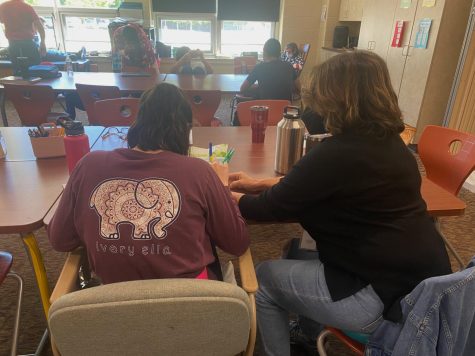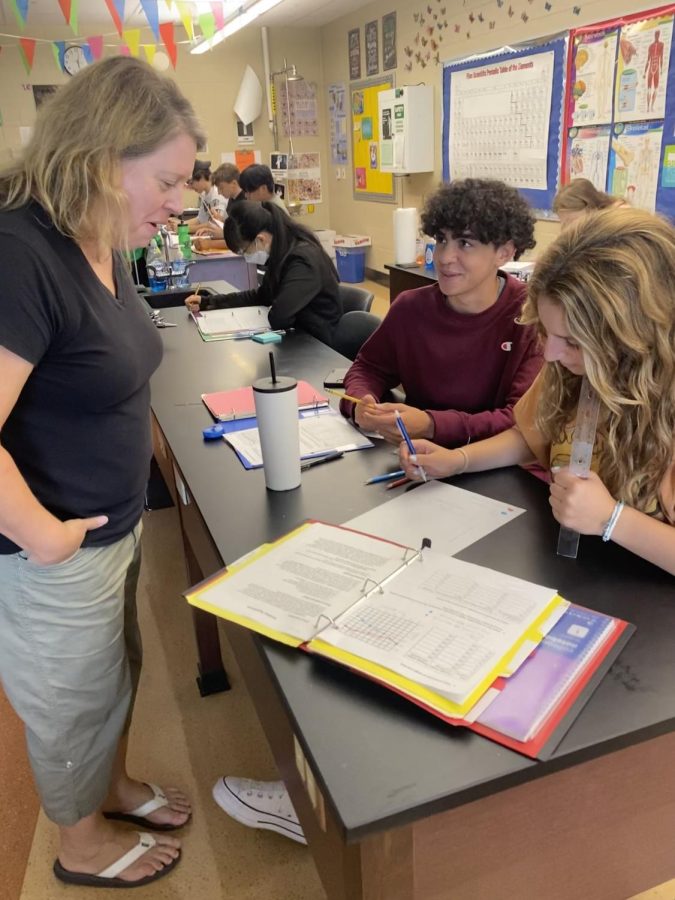Open Positions threaten Waterford Schools
October 19, 2022
The last couple years have been tough for education. Between balancing virtual and in-person classes, students falling behind grade level curriculum, and high rates of student absences, the education field has turned many people off from pursuing a career in teaching. The US has seen a 22% decline in education degrees over the past 13 years. Specifically, in the Waterford Public Schools district, the administration has been struggling to fill enough positions to meet the needs of their students and maintain reasonable class sizes.
In previous years, Brent Bell has been one of the high school’s most reliable substitute teachers. For students who have been wondering where Mr. Bell is recently, he has been acting as a long term substitute in a fourth grade classroom. Since fourth grade teacher Mrs. Gallis has been out on maternity leave, Mr. Bell has had to step up at Oswegatchie. Unfortunately, while Mr. Bell was previously a certified teacher in Manchester, he no longer has a teaching certification and is not technically allowed to take on the role of a long term sub. Instead, there is a 30 day limit on how long Mr. Bell can stay in one classroom. Understandably, young students might feel confused by having a temporary teacher in their classroom for the start of the year, but Mr. Bell’s students haven’t had the same experience: “I have an advantage because I was the building sub at Oswegatchie last year. The fourth graders know me well and are comfortable with me, which makes the transition easier for all of us.” Mr. Bell is no stranger to the classroom and his love for education is apparent: “Students are students everywhere you go. Students want to be successful, and it is the job of the teacher to get barriers out of their way. Financially, being in this line of work is unrewarding, but I love what I do working in education.”
It’s not only substitutes who are being called on as a temporary solution to this problem. At the high school, students and administration have been lucky that Tessa Castleberry, a biology teacher who retired at the end of last year, accepted Mr. Samuelson’s request to fill the biology position for the month of September. Mrs. Castleberry said, “It’s been fun seeing the excitement (and confusion) of my former students when they see me in the hallway. The first week felt very strange and I couldn’t quite believe I was back…but I got back into the swing of things surprisingly quickly and now it feels like I never left.” However, she does have plans for her retirement: “I was starting to apply for laboratory positions and planning a few vacations. I would like to work either in a molecular biology research lab like I did previously at Pfizer or maybe go back to school to get a histotechnologist certification.” While it’s been helpful to have Mrs. Castleberry back at WHS, the clock is ticking on how long she can stay in the position as a retired teacher. Meanwhile, the biology teacher role is still posted and awaiting responses.
 Teachers are not the only people that Waterford is looking to hire. According to the Waterford Schools Employment Opportunities page, six paraprofessional positions are currently available and awaiting applicants (four paraprofessionals and two substitute paraprofessionals). Mrs. Colla, a paraprofessional at the high school, mentioned that the main reason paras are so hard to find is because of the ridiculously low pay: “I work multiple jobs. The majority of paras, including myself, have to have a second job, because relying on this job alone is not enough to make a living.” Information from the public paraprofessional contracts reveal that a paraprofessional on step one of the wage schedule in this past school year made $15.37 an hour, while a para on step 7 would make $19.10. Comparatively, the state minimum wage is $14.00 per hour and workplaces like Target are paying the same or better, ranging from $15 to $24 as a starting wage. Mrs. Colla also raised concerns about how students are not being properly accommodated: “We cannot work one on one, and we see it in classrooms, how only one para is paired with multiple students and it does affect individual learning.”
Teachers are not the only people that Waterford is looking to hire. According to the Waterford Schools Employment Opportunities page, six paraprofessional positions are currently available and awaiting applicants (four paraprofessionals and two substitute paraprofessionals). Mrs. Colla, a paraprofessional at the high school, mentioned that the main reason paras are so hard to find is because of the ridiculously low pay: “I work multiple jobs. The majority of paras, including myself, have to have a second job, because relying on this job alone is not enough to make a living.” Information from the public paraprofessional contracts reveal that a paraprofessional on step one of the wage schedule in this past school year made $15.37 an hour, while a para on step 7 would make $19.10. Comparatively, the state minimum wage is $14.00 per hour and workplaces like Target are paying the same or better, ranging from $15 to $24 as a starting wage. Mrs. Colla also raised concerns about how students are not being properly accommodated: “We cannot work one on one, and we see it in classrooms, how only one para is paired with multiple students and it does affect individual learning.”
At the Waterford Human Resources office, opinions on the district shortage are more hopeful. Nancy Sudhoff, the Waterford Human Resources Director, took a perspective on what is really happening to the education field that contrasts the thoughts of people at Waterford High: “We have done a good job of providing people with information about the climate and culture in our schools, and I would hope that is attracting people to work in Waterford.” She added that she feels it is really up to “word of mouth from our employees, as well as guidance counselors and colleges to promote the idea of working in education.” In staff meetings across the district, principals have urged their staff to recommend the school positions to their retired coworkers, up-and-coming educators or even people just considering a job working with children.
Many factors go into why education has become unappealing across our district and our state, but the Covid-19 pandemic undeniably left its mark. As of February of this year, 55% of educators across the nation were planning on retiring sooner than previously anticipated. In the 2018 to 2019 school year, there was a 10.4:1 student to teacher ratio. A lower ratio is more ideal as it means that there are more professionals in the school equipped to provide students with personalized help. Recently, Waterford has hit a high of 11:1.
Administrators are desperate to put people in the front of the classroom, whether that person is a new hire, an uncertified teacher, or a retiree. As of right now, the schools in our district are doing the best with what they have, but as long as the employment crisis continues, students will notice a change in the way that they receive consistency and accommodations.








